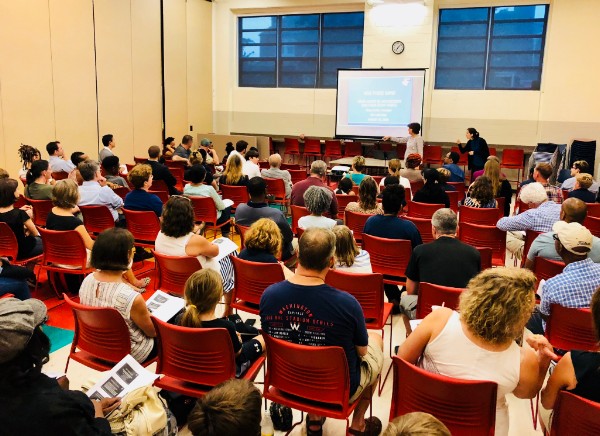Each spring, middle school students and those in 10th grade take PARCC tests in English and math, assessments aligned to national curriculum standards designed to measure whether students are on track to be successful in college and careers. These exams go beyond the multiple-choice questions that were typical of previous standardized testing to get a deeper understanding of student learning. The questions require test takers to apply their knowledge and skills to address real-world problems and describe the reasoning.
The tests are scored on a scale of 1-5. Students who earn scores that place them in Levels 4 or 5 are considered proficient. The District of Columbia has seen continued, steady improvement on the PARCC assessments for the third year in a row – up 8.5 percentage points in ELA and 7.3 in math. A third met expectations in English Language Arts (ELA) and 29.4% met expectations in math, that percentage was 29.4%. In the city, more students tend to be proficient in the elementary grades. At Washington Latin, 66% of our middle school students were proficient in ELA and 49% were proficient in math. In our upper school, of the 72 students who were tested, 75% met expectations in ELA and 47% met expectations in math.
For the second year in a row, we had our highest ever upper school ELA AND math scores. We had our highest ever 8th grade ELA and math scores. More than 40% of our 8th graders earned 5’s on the ELA test. More than 33% of the 8th graders who took the Geometry test earned 5’s. We significantly outperformed city, sector and neighborhood averages for special education students. This was particularly striking in the upper school. Among DC public high school students with IEP’s, only 3.8% earned 4’s or 5’s in ELA. At Washington Latin, our upper school proficiency rate for special education students was 55% in ELA. We maintained our strong ELA performance in both MS and US in absolute terms and compared to other LEA’s and individual schools. Fewer than 3 in 10 DC public high school students were proficient in ELA. Our high school students out-performed their peers by more than two and a half times. Less than 15% of DC public high schools were proficient in math. In our upper school, our proficiency rate was more than 30 percentage points higher. A little less than 23% of African American students in DC public high schools were proficient in ELA. In our high school, 59% of our African American students met expectations. At every grade level, at least 72% of the students earned a 3 or more in math. This means that the majority of our students were at least approaching expectations. In 7th grade, 84% of the students earned a 3 or higher.
We still have work to do with certain groups. Some achievement gaps remained and, for some subgroups, at some grade levels, increased. Math, overall, but particularly in our early middle school grades, remains an area for more growth. To learn more about this data and how we are already working to address our concerns, you are welcome to attend one of our two “Chat and Chew” sessions with me in early October (either in the morning, at 8:00 a.m., on the 1st or in the evening, at 5:30 p.m. on the 4th). Individual student score reports are available now and we plan on distributing them during Back to School Nights.

